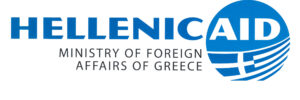Triangular co-operation refers to the co-operation between countries, international organisations, civil society, private sector, private philanthropy and others. The aforementioned actors work together in groups of three or more, to co-create flexible, cost-effective and innovative solutions for reaching the Sustainable Development Goals (SDGs) and provide solutions to overcome today’s most pressing environmental, economic and social challenges.
Partners in triangular co-operation achieve greater results than the sum of their interventions would have yielded. Triangular co-operation does not only deliver direct development results: the collaboration enhances the capacity of partners to tackle global challenges and to work together more strategically. It leads to strong and trusting partnerships that often reach beyond the project.
Many countries and institutions choose to work trilaterally because they want to make use of the comparative advantages of the different partners involved, strengthen partnerships or scale-up proven solutions to development challenges. However, often, the partners involved do not incorporate this additional and significant value into the project design. As a result, projects are designed, monitored and evaluated from the perspective of development results and do not take into account the value or the importance of the partnership created, nor how synergies between the two have been created, if at all.
Triangular co-operation is a modality that has at least three partners, each of them having a particular role:
– The facilitator partner helps to connect countries and organisations to form a triangular partnership and gives financial and/or technical support to the collaboration.
– The pivotal partner often has proven experience and shares its resources, knowledge and expertise through triangular co-operation.
– The beneficiary partner is the target of the development results to be achieved through the triangular co-operation project and in line with its national development priorities and needs. It is responsible for ensuring that results are sustainable.
This co-operation can be reported as Official Development Assistance (ODA) to the OECD DAC Creditor Reporting System (CRS). A provider of development co-operation can report financial flows committed and disbursed for a triangular activity, when beneficiary countries are ODA-eligible. While many countries and organisations acknowledge the advantages of working through triangular co-operation, it still only makes up a small proportion of overall Official Development Assistance (ODA).
More information:
http://www.oecd.org/dac/dac-global-relations/triangular-cooperation.htm
